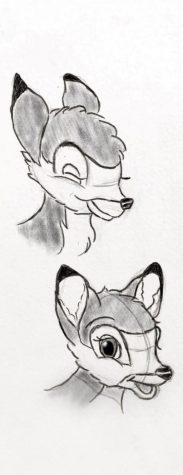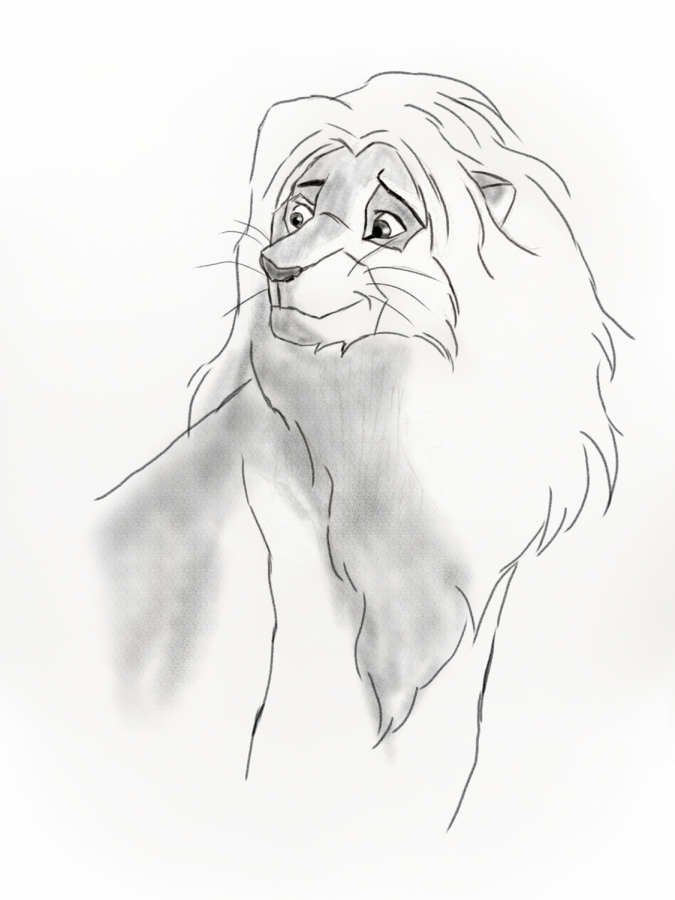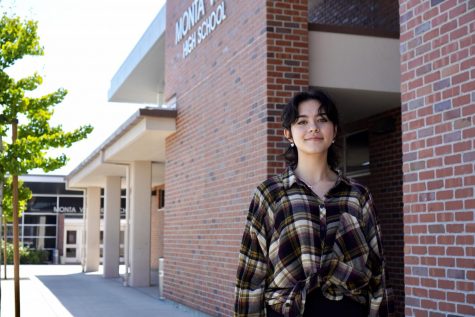Drawn Dead: The live-action Disney Renaissance
The possible death of 2D animation
September 27, 2019
Following the 2009 release of one of Disney’s last 2D animation movies, “The Princess and the Frog,” Walt Disney Studios laid off a slew of hand-drawn animators a few years later. Since then, almost 40 digital 3D animation features have been released. With no current plan to continue where Walt Disney began in traditional animation, some animators fear its death in the industry.
Offput by the “plastic” feel of CGI or special effects films, like recent live-action remakes of Disney movies, art teacher Jay Shelton prefers what he is most familiar with from his childhood — traditional animation. Shelton believes pre-3D animation Disney was smart with differentiating what stories fit for either animation or live-action and what could be beneficial to storytelling without having to blur the line between either.
“I absolutely love those first films, like the ‘50s Disney films,” Shelton said. “If you’re going to use 3D or CGI, make it look like CGI. I love ‘The Incredibles’ because that looks like what it is, [a 3D animation film]. You couldn’t have done that with traditional animation and it’s not trying to look like reality. It’s its own thing. These people going to see the live action [movies] for the first time [will] miss something.”

One of Shelton’s students, senior Anahita Sukhija, hopes to major in animation or illustration with a focus in production. With experience from past projects in hand-drawn animation, once making over 150 drawings for a 20-second video clip, Sukhija has grown fond of the technique and patience necessary for all kinds of animation. For her, 2D and 3D animation are separate mediums, something incomparable to each other, and similar to Shelton’s opinion, Sukhija believes they shouldn’t be a replacement of either.
She brings up the remakes of “The Lion King” and “Aladdin,” saying Disney is losing its touch in creating unique stories and ways of telling it, which she saw in movies like “Ratatouille” or “Bambi.”
But Sukhija understands where Disney is coming from — having to produce movies continually and run such a large company proves true to being a “slave” to the audience and their reliance on money. Because of this, Sukhija believes Disney has dropped traditional animation because the audience’s expectation changing from what it was 30 years ago when “Aladdin” was released.
“Now that the generation that watched ‘Lion King’ as a kid is growing up, [they want to] make the same movie in a medium [the new generations] are familiar with,” Sukhaja said. “I think a lot of people think that 3D animation and CGI [are] just better than 2D animation because it looks cleaner. So then, they have an audience to make the newer ‘Lion King’ for.”
Having had experience in 3D animation by attending summer camps at Stanford and learning to use 3D computer graphics software for school projects, junior Ryan Safa believes to some degree, Disney should continue to evolve their form of animating. He says, similar to the beginning of 3D animation with movies like ‘Toy Story,’ animation is ever growing into innovative forms of itself. For Safa, that’s what excites him about the future of 3D graphics.

“They shouldn’t completely lose that sense of art [from 2D animation],” Safa said. “I think there’s always going to be some people who are going to prefer different styles of animation and appreciate that, but at the same time, a large portion of people will also be excited to see how crazy and complicated and realistic-looking animation is going to get.”
Sukhija agrees that advancements in animation have helped animators in the industry create at a much faster rate. But, because of this change into an all digital work process, television has been touched too, and she has seen traditional cartoons change into something new. In TV, Sukhija says 2D animation still lives, whereas Disney has lost its chance of utilizing a medium with potential.
“I’m all for advancing in the technical side, but I also think that they shouldn’t walk out on traditional animation,” Sukhija said. “[Disney has] the skill set to create amazing movies. But, they’re just reusing the same stories … I think l all types of animation is valid and accomplish different things. If they used [2D animation still], they could tell a very different stories.”

















